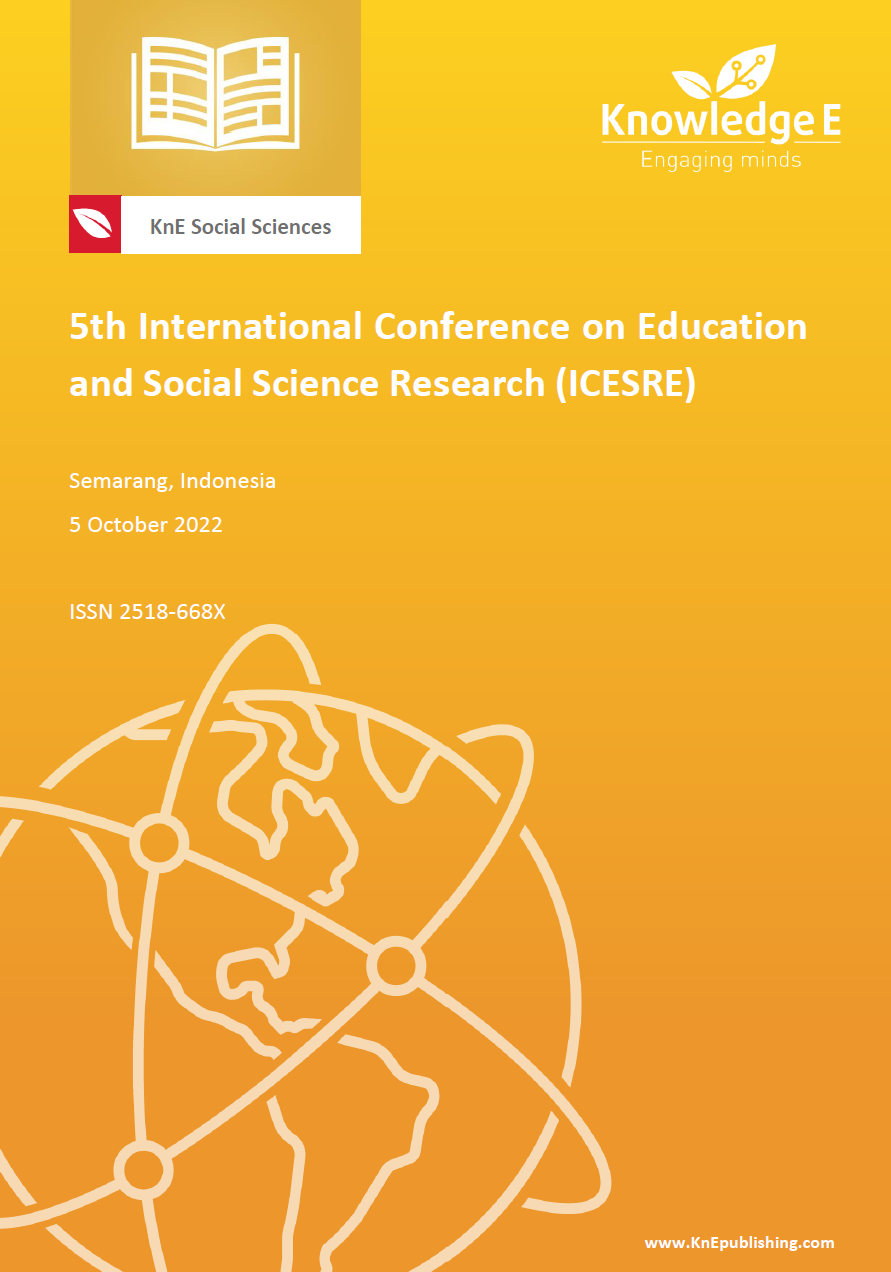Entrepreneurial Activity for Integrating Mathematics, Art, and Social Science into Society
DOI:
https://doi.org/10.18502/kss.v7i19.12472Abstract
This article shows how entrepreneurial activity is used in a mathematical research product. The used methods are online and offline marketing activities where mathematical formulas are implemented to create visual images, both 2-dimensional and 3-dimensional, namely parametric curves mapped with complex functions and using algebraic surfaces. The results of these activities are motifs built into the form of souvenirs, ornaments, accessories, and batik motifs. Furthermore, entrepreneurial activities were carried out with students, and small business craftsmen collaborated. The main result of this activity is the integration of mathematics with social and humanities activities. This has implications for the development of science and collaboration in economic recovery. Additionally, this activity provides production opportunities and provides new insights for ordinary people that mathematics can be expressed in batik motifs, accessories, souvenirs, and various derivative products.
Keywords: entrepreneur; mathematics; parametric; algebraic surfaces
References
[2] Palmér H, Johansson M. Combining entrepreneurship and mathematics in primary school–what happens? Education Inquiry. 2018;9:331–346.
[3] Haara FO. Pedagogical entrepreneurship in school mathematics: An approach for students’ development of mathematical literacy. International Journal for Mathematics Teaching and Learning. 2018;19:253–268.
[4] Palácios RAF, Paz Montes LS, Alvarez Paz DM. Mathematical entrepreneurship in educational institutions. Journal of Physics: Conference Series. 2019;1408.
[5] Mary Olukemi O, Ezekiel Gbenga O. Relevance of mathematics education to entrepreneurship skills acquisition towards the realization of vision 20:2020. International Journal for Cross-Disciplinary Subjects in Education. 2015;7:2768– 2773.
[6] Chen L, Tello-Cuautla E, Hamarash II, Pham VT, Abdolmohammadi HR. A novel chaotic system in the spherical coordinates. The European Physical Journal Special Topics. 2020;229:6–7.
[7] Parhusip HA. Efek diskritisasi pada modifikasi hypocycloid menjadi CSCPP (curve stitching connected pseudo polygon). Jambura Journal of Mathematics. 2020;2:60– 72.
[8] Parhusip HA, Purnomo HD, Nugroho DB, Kawuryan ISS. Learning geometry through surface creation from the hypocycloid curves expansion with derivative operators for ornaments. Desimal: Jurnal Matematika. 2021;4:1–12.
[9] Parhusip HA, Purnomo HD, Nugroho DB, Kawuryan ISS. Modern ethnomathematics mainstreaming through mathematics entrepreneurship using mathematical ornaments. IJEME. 2021;1:21–23.
[10] Zahra SA, Liu W, Si S. How digital technology promotes entrepreneurship in ecosystems. Technovation. 2022:1–8.
[11] Parhusip HA, Susanto B. Inovasi geometri sebagai media pembelajaran matematika kreatif. J Mat Kreat. 2018;9:63–70.
[12] Baig U, Hussain BM, Meidute-Kavaliauskiene I, Davidavicius S. Digital entrepreneurship: Future research directions and opportunities for new business model. Sustainability. 2022;14:1–16.
[13] Gerner M. Assessing and managing sustainability in international perspective: Corporate sustainability across cultures – towards a strategic framework implementation approach. International Journal of Corporate Social Responsibility. 2019;4.
[14] Zhao Y, Zhao X, Shi J, Du H, Marjerison RK, Peng C. Impact of entrepreneurship education in colleges and universities on entrepreneurial entry and performance. Economic Research-Ekonomska Istraživanja. 2022:1–60.
[15] Nguyen TT, Nguyen LTP, Phan HTT, Vu AT. Impact of entrepreneurship extracurricular activities and inspiration on entrepreneurial intention: Mediator and moderator effect. SAGE Open. 2021;11.
[16] de Sousa MM, de Almeida DAR, Mansur-Alves M, Huziwara EM. Characteristics and effects of entrepreneurship education programs: A systematic review, no. 170123456789. Springer International Publishing; 2022.

